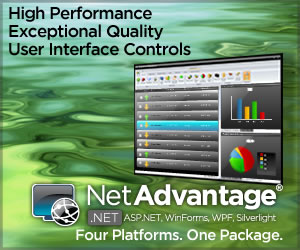Unum’s SOA Project Yields Benefits Beyond an SMB Portal
- Sunday, June 1, 2008, 12:00
- Insurance
- Add a comment
Despite the implementation challenges, software-oriented architecture (SOA) can be a great vehicle for streamlining and expanding financial services offerings. Insurance provider Unum is now finding this out through an ambitious joint effort by business and technology specialists to build a new self-service portal for small to medium-sized business (SMB) customers.

|
| Unum’s new SOA-based Internet portal allows insurance administrators and employees in SMBs to perform enrollment, policy changes, claims submission and bill payment across a variety of Unum insurance plans, all from a single Internet interface. |
“We have undergone a major transformation,” says Rick Klausner, Unum’s vice president of customer capabilities and enterprise architecture. “We have completely redesigned our business, in full partnership with IT.”
Unum, the leading provider of disability insurance in the United States, also is a big player in the categories of long-term care and life insurance for enterprise and SMB customers, with voluntary insurance as another long-time focus.
Rolled out incrementally through Unum’s 30 field offices, the new SOA-based Internet portal allows insurance administrators and employees in SMBs to perform enrollment, policy changes, claims submission and bill payment across a variety of Unum insurance plans, all from a single Internet interface. SMB customers also can now get help as needed from a computer telephony integration (CTI)-enabled customer contact center.
Ease-of-use is particularly important to SMBs, Klausner points out. Unlike large corporations, smaller customers typically do not have full-time benefits administrators on board.
“Employee education and communication over the Web helps employees make more informed decisions,” concurs Tim Fitzgerald, an enterprise architect at Unum. “This will lead to better participation and fewer questions for the person administering the plan.”

|
| Rick Klausner, Unum vice president of customer capabilities and enterprise architecture. |
Meanwhile, in creating the portal, Unum also has produced a consistent and unified architectural platform for delivering insurance plans across different functional areas and price points.
In contrast to its outward simplicity, however, the new Internet portal uses an intricate set of SOA Web services, created to support integration with more than 25 different legacy applications at Unum, many of them garnered through acquisitions over the years.
During the second half of 2006, Unum decided to redesign its offerings for SMBs, with an eye to full automation.
“This effort wasn’t about SOA in the beginning,” Klausner says. “It was about business process reengineering for agility, speed-to-market and integration with legacy systems. But ultimately, we took the direction of SOA.”
Portal implementation also coincided with a cultural shift at the company toward using technology to meet business objectives.
For Unum’s technical staff, the emphasis is no longer on just “replacing Technology X on System C,” says Keith Stackhouse, another enterprise architect at Unum. Instead, technologists are now “supporting the business strategy to penetrate the marketplace with new products and services.”
Accordingly, the project team at Unum encompasses 15 business executives, in addition to 20 project leaders, 12 application architects and 375 developers.
On the technology side, implementation has involved complex integrations between Windows 2003 Server and other Microsoft .NET servers with mainframe-based DB2-stored procedures and an AIX-based IBM MQSeries messaging system.
Underneath the new portal, Unum is running Windows 2003 Server with Host Integration Services (HIS) 2006 at the server tier and Windows 2003 Server with BizTalk 2006 at the vendor tier.
Also to support integration, the company has implemented Tibco’s iProcess Decision rules engine and iProcess Workflow on its AIX servers.
 During the first phase of the SMB project, Unum concentrated on the enrollment system, creating five strategic workflows, 15 business services, about 100 BizTalk orchestrations, more than 300 service operations, and 500,000 or so lines of code in that phase alone.
During the first phase of the SMB project, Unum concentrated on the enrollment system, creating five strategic workflows, 15 business services, about 100 BizTalk orchestrations, more than 300 service operations, and 500,000 or so lines of code in that phase alone.
The BizTalk orchestrations between MQSeries, Tibco and DB2 handle enrollment functions such as recording the sale, preparing customers for enrollment and issuing contracts over the Web, for example.
Along the way, the team also built a Logical Data Manager (LDM) to provide a consistent messaging format for use throughout the portal.
But the results of the undertaking are already proving well worth the effort. In mid-2007, Unum introduced the first phase of the implementation. By the end of that year, the company had added value-added services such as online claims submission, policy changes, billing and CTI-enabled customer care.
As guidelines for the next steps in deployment, Unum is using results of an SOA Maturity Model assessment, conducted last fall in conjunction with Microsoft.
“Early reactions from our agents and other intermediaries are very positive,” says Klausner. “Now we’ll start building upon what we’ve already done, as we continue to innovate.”
All the while, Unum’s massive SOA project has been establishing a solid basis for future collaboration between the business and technology aspects of the insurance firm.
“This degree of collaboration between business and technology for process reengineering is absolutely unparalleled in the history of our firm,” declares the Unum vice president.
 Print This Post
Print This Post






